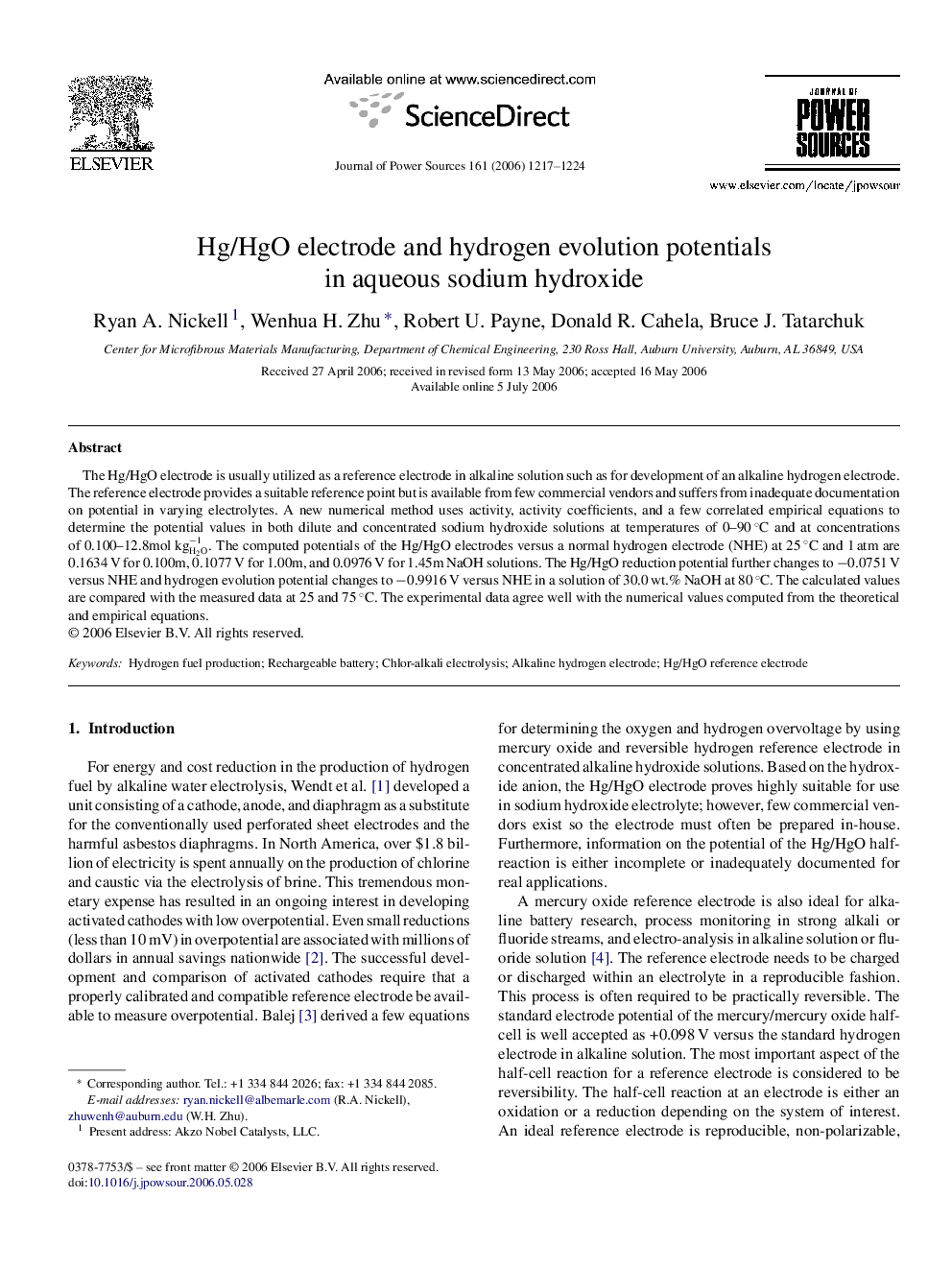| Article ID | Journal | Published Year | Pages | File Type |
|---|---|---|---|---|
| 1292072 | Journal of Power Sources | 2006 | 8 Pages |
The Hg/HgO electrode is usually utilized as a reference electrode in alkaline solution such as for development of an alkaline hydrogen electrode. The reference electrode provides a suitable reference point but is available from few commercial vendors and suffers from inadequate documentation on potential in varying electrolytes. A new numerical method uses activity, activity coefficients, and a few correlated empirical equations to determine the potential values in both dilute and concentrated sodium hydroxide solutions at temperatures of 0–90 °C and at concentrations of 0.100–12.8mol kgH2O−1. The computed potentials of the Hg/HgO electrodes versus a normal hydrogen electrode (NHE) at 25 °C and 1 atm are 0.1634 V for 0.100m, 0.1077 V for 1.00m, and 0.0976 V for 1.45m NaOH solutions. The Hg/HgO reduction potential further changes to −0.0751 V versus NHE and hydrogen evolution potential changes to −0.9916 V versus NHE in a solution of 30.0 wt.% NaOH at 80 °C. The calculated values are compared with the measured data at 25 and 75 °C. The experimental data agree well with the numerical values computed from the theoretical and empirical equations.
